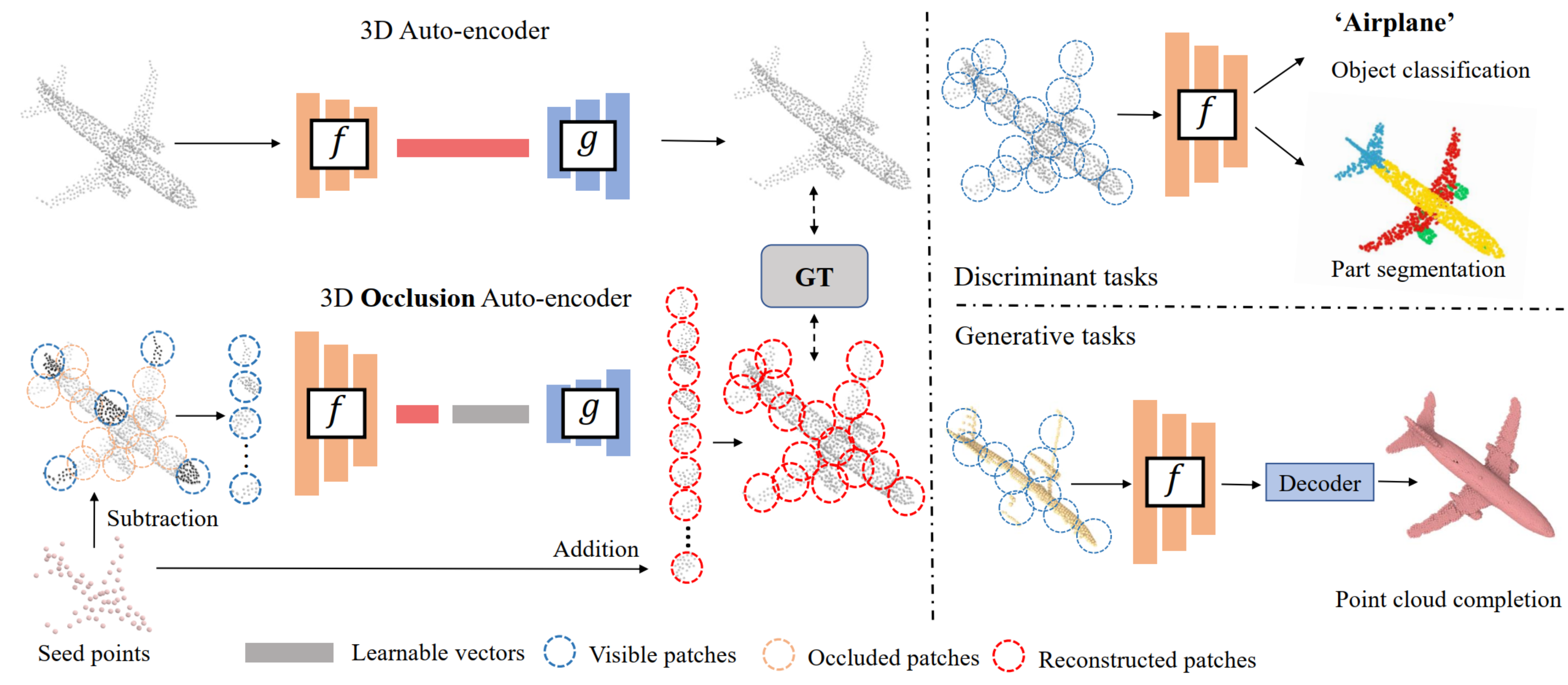3D-OAE: Occlusion Auto-Encoders for Self-Supervised Learning on Point Clouds
The manual annotation for large-scale point clouds is still tedious and unavailable for many harsh real-world tasks. Self-supervised learning, which is used on raw and unlabeled data to pre-train deep neural networks, is a promising approach to address this issue. Existing works usually take the common aid from auto-encoders to establish the self-supervision by the self-reconstruction schema. However, the previous auto-encoders merely focus on the global shapes and do not distinguish the local and global geometric features apart. To address this problem, we present a novel and efficient self-supervised point cloud representation learning framework, named 3D Occlusion Auto-Encoder (3D-OAE), to facilitate the detailed supervision inherited in local regions and global shapes. We propose to randomly occlude some local patches of point clouds and establish the supervision via inpainting the occluded patches using the remaining ones. Specifically, we design an asymmetrical encoder-decoder architecture based on standard Transformer, where the encoder operates only on the visible subset of patches to learn local patterns, and a lightweight decoder is designed to leverage these visible patterns to infer the missing geometries via self-attention. We find that occluding a very high proportion of the input point cloud (e.g. 75%) will still yield a nontrivial self-supervisory performance, which enables us to achieve 3-4 times faster during training but also improve accuracy. Experimental results show that our approach outperforms the state-of-the-art on a diverse range of downstream discriminative and generative tasks.
PDF Abstract




 ModelNet
ModelNet